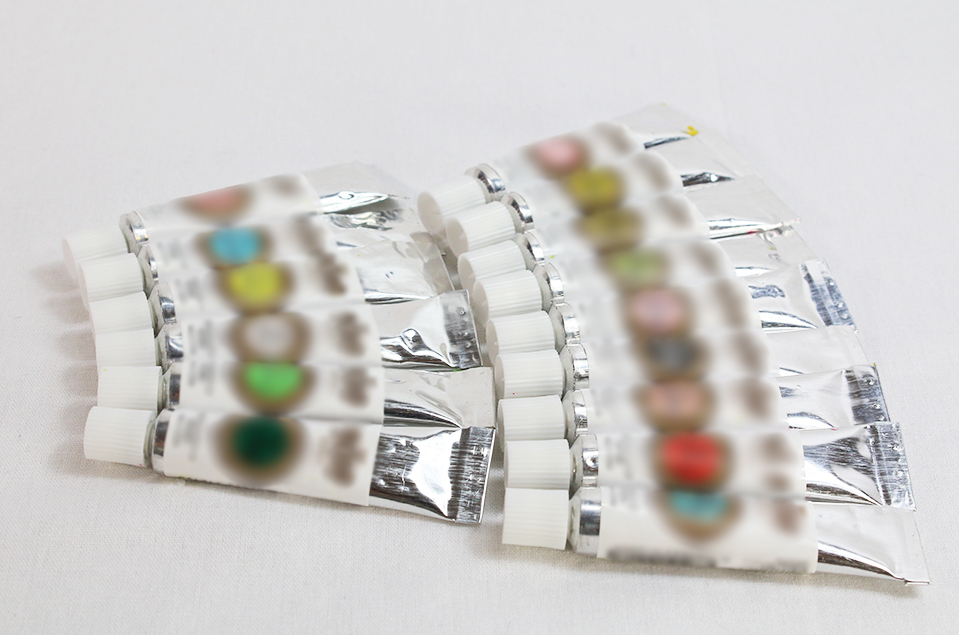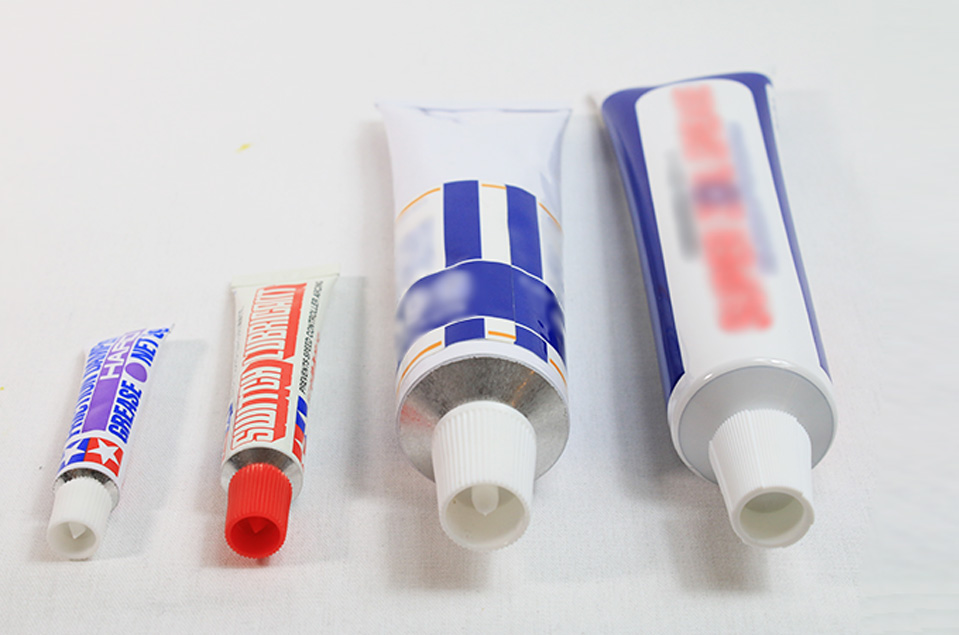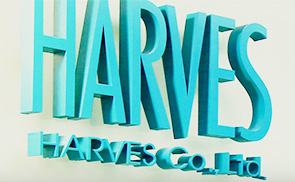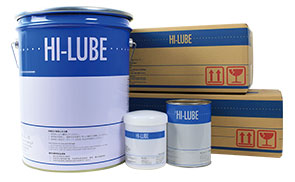


Examples of tube filling and grease filling
Examples of tube filling and grease filling
Most of the industrial products such as viscous grease are shipped out in drums and pales. Tubes are optimal for those products when they are actually in use. Aluminum tubes are originally made with porcine bladder to put paints in small portion in the end of 18th century, and are still in use for many products.
Tube containers we can handle at our factory
Different types of tubes are used depending on the product category
RC car grease
Car repair agents
Maintenance products for automobile manufacturers
Electric wire maintenance products for electronics companies
Motor sports related chemicals
Building repair products
Nail products
UV curing, hobby related products





Inquiries received
~5g aluminum tube~
We know our product can be used easily in aluminum tubes, but where can we buy those tubes? How can we fill them with our product? - Many of our customers had these questions.
Customer needs
They wanted to put their 300 nail colors into retro-inspired aluminum tubes and release them as new products.
Customer's challenge
They searched for a manufacture that could put small amount of each color into aluminum tubes, and found us.
Our response
We first checked whether the product inside reacts with aluminum and degrades, and the degree of ultraviolet transmission with sample filling test before manufacturing 1,000 pieces of each color. Few manufactures offer aluminum tubes for non-industrial use, and they have minimum order quantity even if you are able to find one. Harves is able to propose some of our regular stock tubes in the size commonly used by many customers. Our 1g-3g small tubes and 5g-10g are among our specialties.
Inquiries received
~100g tac tube~
Our wall repair product has a variety of colors to match the wall of ordinary houses, but we do not know which one will sell the best until we actually launch it. Is it possible to release this hard-to-handle solvent in all colors and in small lots? - The customer wanted to see our filling process on site before making the decision.
Customer needs
They want to put the 200-color building repair agent that hardens with moisture in the air into easy-to-handle tac tubes while purging nitrogen, and release as new product.
Customer's challenge
The company only manufactured the product in bulk and was looking for a partner who can handle the filling for 200 pieces/color.
Our response
After selecting a filling machine, we conducted sample filling with the customer on site to check the details of manufacturing process. We now receive periodic orders mostly for the 50 popular colors. We checked the SDS in advance, and received their representatives from sales, product development, quality management and procurement divisions to confirm the filling machine and technologies. The expertise of the client and our proposal together resulted in a successful business.
Inquiries received
~10g aluminum tube~
If we put our grease into aluminum tubes, there is a risk of leaking due to liquidation under high temperature. Is there a way to test it in advance? - They wanted to conduct the test and confirm before commercialization.
Customer needs
As the product will be exported by ship, they wanted to check the durability under high temperature while going through the equatorial region.
Customer's challenge
They were looking for a filling company with regular stock of aluminum tubes and able to take orders in large quantity.
Our response
We conducted accelerated heat-proof test with assumed temperature of 100°C on the deck and 80°C inside the container ship. After selecting the tubes to be used, we started receiving constant orders. We put several greases with different properties into aluminum tubes and conducted a test using Arrhenius model for temperature acceleration. A variety of data was obtained on the property of grease, impact of the volume of the air inside the tubes, etc., before finalizing the specification. While laminated tubes are predominant in the market these days, many products are also released in aluminum tubes to highlight their convenience and rhetoric impression. It is especially good for high-value products in 1g-10g/package.


























